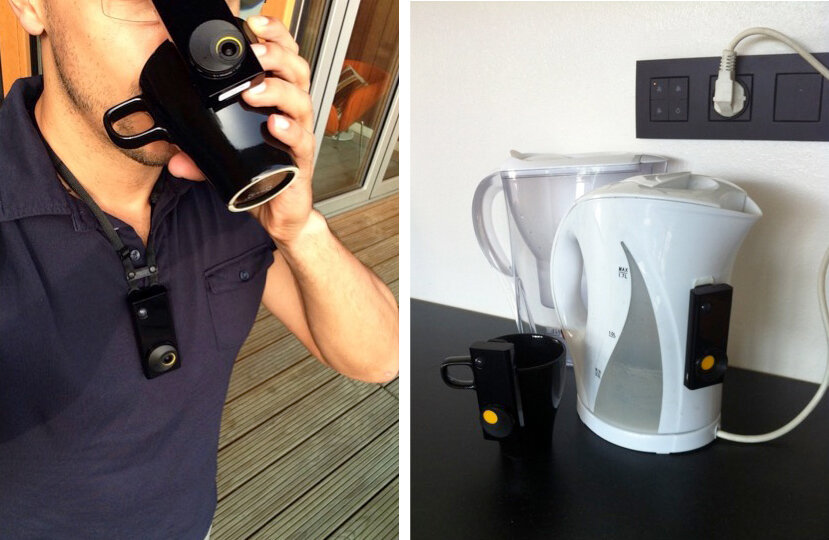ThingTank
2014-2015
With the rise of IoT, even the mundane artefacts had begun creating huge streams of data about people’s everyday activities, learning patterns of use, and forming connections with other artefacts. In ThingTank, we envisioned alternative futures in which these smart and connected artefacts started seeing connections that may be invisible to the human eye or suggesting new iterations of themselves.
ThingTank was an interdisciplinary project aimed at figuring out how objects can evolve and contribute to innovation. Understanding how people live with things, and in turn, how things come to live with us called for methodologies that went beyond a focus on humans. We developed “thing ethnography” (Giaccardi, Cila, Speed, & Caldwell, 2016) as a novel perspective/method in the ThingTank for helping designers to gain an understanding on how to create things with sensors, connectivity, and agency. In thing ethnography, we let objects record the world around them in the way ethnographers record the world from a human’s perspective. The data captured by things help detangling the human-thing entanglement, provide designers to access previously inaccessible data worlds, and inspire new ways of framing and solving design problems collaboratively with things.
ThingTank was a 2.5 million project by the Faculty of Industrial Design Engineering (IDE) at Delft University of Technology (Netherlands), the Centre for Design Informatics at the University of Edinburgh (Scotland), the Active Intelligence Group at the University of Electro-Communications (Japan) and the Department of Anthropology at the University of California, Santa Cruz (USA). The project was awarded by the MIT Skoltech Initiative.
Thing ethnography - Object instrumentation with the Autographer wearable cameras
Thing ethnography data collected by the three Autographers installed at four households
The templates used for ideation after the thing ethnography
Related Publications
Giaccardi, E., Speed, C., Cila, N. & Caldwell, M. (2016). Things as co-ethnographers: Implications of a thing perspective for design and anthropology. In R. C. Smith, T. Otto, K. T. Vangkilde, J. Halse, T. Binder & M. G. Kjærsgaard (Eds.), Design Anthropological Futures. London: Bloomsbury Academic.
Giaccardi, E., Cila, N., Speed, C. & Caldwell, M. (2016). Thing ethnography: Doing design research with non-humans. In Proceedings of the 2016 ACM Conference on Designing Interactive Systems (DIS '16). ACM, New York, NY, USA, 377-387.
Cila, N., Giaccardi, E., Tynan-O’Mahony, F., Speed, C., Caldwell, M. & Rubens, N. (2015). Listening to an everyday kettle: How can the data objects collect be useful for design research? In R. Valkenburg, C. Dekkers & J. Sluijs (Eds.), Proceedings of PIN-C: 4th Participatory Innovation Conference. Den Haag: The Hague University of Applied Sciences.
Cila, N., Giaccardi, E., Tynan-O’Mahony, F., Speed, C. & Caldwell, M. (2015). Thing-centered narratives: A study of object personas. Paper presented at the 3rd Seminar Research Network for Design Anthropology, Aarhus, Denmark.


